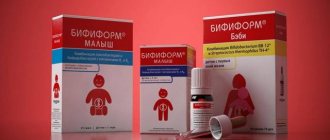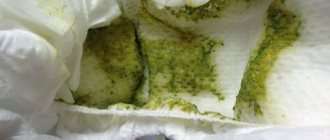Breast milk is the ideal food for a newborn baby. With mother's milk he receives all the necessary nutrients, vitamins and microelements. But what should you do if suddenly a mother or child gets an intestinal infection? Is it possible to continue breastfeeding with such a pathology or is it better to give it up for a while? All these questions become relevant especially during the period if a nursing mother falls ill with rotavirus. This is understandable; the woman is worried that the baby will not catch an unpleasant disease. To find out whether it is possible to breastfeed with rotavirus, you need to understand the mechanism of transmission of this infection.
What is rotavirus infection
The causative agent of the disease - rotavirus - includes 9 representatives, but three types damage the human intestines: A, B, C. In the external environment, microorganisms live on household items, furniture, food, water, mobile phones, money.
Getting from contaminated hands into the mouth and stomach, the virus moves to the intestines, where it quickly multiplies. Infected cells reproduce copies of rotaviruses. Having exhausted the resource, they die, causing inflammation of the digestive system.
Viral endotoxin reduces the absorption of water in the intestine. This causes the main symptom of infection – diarrhea. The disease is accompanied by frequent vomiting. When infected with rotavirus, the body loses a lot of fluid. As a result, the ratio of water and electrolytes is disrupted. The amount of circulating blood in the vessels decreases, which creates the preconditions for lowering blood pressure.
The disease affects children more often than adults. In 80% of cases, intestinal infections are caused by rotavirus in infants. The pathogen spreads easily in preschool groups. The peak incidence occurs at the end of autumn and continues until mid-spring. Such properties of rotavirus infection gave rise to the second name of the disease – “intestinal flu”, although the pathogen has nothing to do with influenza.
Rotavirus can appear in a nursing mother while caring for a sick family member or child. Adults are less likely to become infected through household items due to a strong immune system.
How can you get infected?
The main causes of infection can be presented as follows:
- lack of personal hygiene;
- eating unprocessed fruits;
- several people drinking from the same container;
- use of shared towels;
- consumption of milk, especially raw milk;
- ingestion of water from common bathing sources.
The contact route of spread of the virus is also important. It is more important for a nursing mother. If she becomes infected, there is practically no chance that the child will not get sick. The same situation applies to the nursing mother herself, if her infant is somehow infected. The chance of her becoming infected is extremely high, at 95 percent, since there is very close contact between them.
Since at the very beginning of the disease the virus damages the mucous membrane of the pharynx and trachea, there is a possibility of airborne transmission of the agent. However, this method of virus penetration is typical only for mass groups; it does not play a primary role in society.
Causes of rotavirus
Rotavirus infection of people of any age most often occurs through contaminated hands.
A sick person excretes a huge number of microorganisms with feces. Rotaviruses enter the body of a healthy person with food and water. Therefore, it is especially important to practice hand hygiene after using the toilet and before eating.
Risk factors for rotavirus infection:
- prematurity of the baby;
- insufficient nutrition of mother and child;
- poor living conditions;
- immunodeficiency diseases - HIV infection, AIDS.
Rotavirus usually infects children from 6 months of age to 2–3 years of age. The reason lies in the fact that babies are introduced to complementary foods, and then they switch to food from the common table. Adult food increases the risk of infection. Rotavirus during breastfeeding (breastfeeding) rarely occurs in infants under 6 months of age.
Diet for mother
Rotavirus and breastfeeding are compatible. A nursing mother should avoid foods that provoke dyspeptic symptoms in the baby (inflammation, gas formation). It is better not to eat:
- all types of cabbage, cruciferous vegetables;
- plants of the legume family;
- lettuce, dill, parsley;
- bakery products;
- berries in any form;
- plums
You can eat water-based cereals, soups with added vegetables, low-fat fish, poultry and meat, carrots, bananas, apples.
Symptoms
1–2 days after infection, infants develop acute cold symptoms in the form of pain and sore throat, runny nose, and fever. After a few days, signs of rotavirus gastroenteritis appear:
- General intoxication is manifested by weakness, refusal to feed, and frequent crying.
- Watery diarrhea occurs up to 15 times a day. The stool is more like foam with mucus. This condition lasts from 3 to 7 days.
- Vomiting in infants can last up to 2 days.
- The temperature rises to 38.0–39.0 °C and lasts for three days.
- Pain on palpation is felt in the middle and lower abdomen.
Repeated diarrhea and vomiting cause dehydration. This is evidenced by a dry diaper for 3–6 hours, a dry tongue, and crying without tears. A drowsy state and sunken eyes also indicate a lack of fluid due to rotavirus.
Loss of 10% of water from the body leads to the development of convulsions and coma. In the absence of medical attention, fatal 15% dehydration occurs after 6–12 hours of frequent vomiting and profuse diarrhea.
Signs of dehydration require urgent hospitalization of the child by ambulance.
Associated symptoms
The initial stage of rotavirus is asymptomatic. For the first day, a nursing mother may not even be aware of the presence of the disease. Primary signs usually begin to form within 12-18 hours. The incubation period lasts 2-6 days.
With this disease, vomiting and nausea are always observed.
The general condition of the nursing mother deteriorates significantly. Vomiting and nausea appear. Severe pain occurs in the abdominal cavity. A clear sign of rotavirus is watery fecal matter that is yellow-green in color.
After a few days of the disease, the feces become grayer. Additional foreign matter may be present. Rotavirus with hepatitis B is acute. The condition of the mucous membrane of the intestinal tract is disrupted. Nutrients are not fully absorbed.
Osmotic pressure increases in the intestinal tract of a nursing mother. It is for this reason that the stool becomes thinner than usual. With rotavirus, a woman also complains of a severe headache. The temperature rises sharply to 38-39 degrees. Appetite is greatly reduced, which is unacceptable during breastfeeding. A nursing mother faces a loss of strength. For a weakened immune system, this becomes a real blow.
If a child becomes infected, he may develop diarrhea
- chills;
- refusal to feed;
- tearfulness and anxiety;
- darkening of urine;
- runny nose.
When infected from the mother, the baby sleeps poorly and cries constantly.
The incubation period of the disease is a week. The signs of rotavirus infection in a nursing mother differ from the symptoms of intestinal flu in a child. In an adult whose digestive system has formed, the stomach contains enough hydrochloric acid to reduce the content of pathogenic viruses and bacteria. When previously infected with rotavirus, middle-aged people produce immunoglobulin, which prevents the penetration of harmful microorganisms.
The main symptoms that a mother has are:
- weakness;
- liquid, watery stool several times a day;
- pain, soreness during swallowing.
The absence of pronounced symptomatic signs in an adult leads to untimely diagnosis of the disease. Manifestations of rotavirus disappear after 3 days without special treatment, but a person is a carrier of intestinal flu.
The main symptoms of infectious pathology in a child on breastfeeding include:
- regular vomiting;
- frequent discharge of liquid feces with a clayey consistency of gray-yellow color;
- abdominal cramps, increased gas formation;
- discharge of dark urine;
- feverish condition;
- runny nose;
- sore throat, cough;
- hyperthermia;
- decreased food cravings;
- crying, increased excitability, nervousness.
Signs of intoxication and damage to the intestinal tract appear within 1-2 days after a pathogenic infection enters the body. The acute period of rotavirus in a child is observed for 3-5 days. Treatment time until complete recovery is 6-7 days.
Dangerous symptoms of rotavirus
Severe intestinal flu is treated in a hospital. Characteristic dangerous signs of rotavirus infection:
- Increased bowel movements up to 10 times a day and vomiting up to 7 times a day lead to dehydration. The baby urgently needs to restore not only the lost fluid, but also electrolytes - magnesium, potassium, calcium, sodium.
- The appearance of blood during defecation or black coloration of stool. A child in this condition must be hospitalized in the infectious diseases department.
- Increased pain in the abdominal area indicates damage to the intestines by rotavirus. Ulceration of the wall is the cause of bloody stools.
If any of these symptoms appear, you must call an emergency team or take the baby to an infectious diseases hospital.
When can feeding be continued?
If a nursing mother is diagnosed with rotavirus or enterovirus, breastfeeding may not be stopped.
These infections are not transmitted through milk, so if certain hygiene rules are followed, the baby will not become infected. The same goes for food poisoning. In this case, the child’s health is not at risk. If a woman has good immunity, then within a couple of days her health will improve significantly.
But you can continue breastfeeding only if the mother’s condition is not too severe. If a woman suffers a severe illness, she has severe symptoms of intoxication and dehydration, then it is better to stop breastfeeding. At this time, a woman needs to create all the conditions for recovery and limit any stress on the body.
To maintain lactation, it is recommended to express your breasts frequently. The resulting milk can be boiled in a water bath and given to the child.
Is it possible to breastfeed a baby?
Young mothers often ask the doctor: is it possible for a baby to breastfeed if they have rotavirus?
Important! The World Health Organization (WHO) recommends continuing breastfeeding during rotavirus. The baby at any stage of infection should receive as much mother's milk as he can.
The mother of the baby needs to remember that lactation cannot be stopped due to any viral infections in the child. Rotavirus and breastfeeding are the optimal combination for infant illness.
If your child is sick with rotavirus
In case of intestinal infections, the mother should breastfeed the baby. Breast milk will help your baby recover faster if he or she has rotavirus. It contains:
- Mother's immune bodies protecting the baby from infection. The more antibodies the baby receives, the faster he will recover. Rotavirus with hepatitis B occurs in a mild form. Recovery from illness takes less time.
- Milk contains liquid that prevents dehydration. Some children accept only breastfeeding during illness.
- Milk is an easily digestible food that is essential for maintaining strength.
- Breastfeeding brings comfort to mother and baby.
When infected with rotavirus, a child loses interest in food and becomes lethargic.
Breastfeeding during intestinal infection should occur on demand. In the absence of appetite, the mother herself should breastfeed more often and encourage the sucking of milk with gentle conversation. In the first two days of illness, it is recommended to reduce 1-2 feedings. Over the next three days, the volume of food is restored. Alternating milk and saline solutions reduces the frequency of bowel movements and improves the consistency of stool.
Despite poor appetite due to rotavirus, you should not offer formula from a bottle to your child. Otherwise, you will provoke a decrease in lactation or a refusal to breastfeed. To prevent your baby from weakening from water deficiency due to rotavirus infection, you need to give Regidron solution, water, and juice. It is recommended that children over 6-8 months of age be given liquid from a cup, and infants younger than this age from a spoon or from a syringe without a needle.
If mom is sick
Young mothers are wondering: is it possible to breastfeed if you have rotavirus? If the mother has contracted the intestinal flu and the baby is healthy, lactation should be continued as usual. Is rotavirus transmitted through breast milk? No, the virus does not pass into mother's milk. Infection occurs through contact through dirty hands, toys, contaminated food and water. To avoid infecting the baby, it is enough for the mother to take the following precautions:
- wear a respirator or a medical mask throughout the entire period of illness;
- wash your hands with soap before contacting the child;
- ventilate the room and do wet cleaning to clean the air from rotavirus;
- You can't kiss the baby.
In case of food poisoning during breastfeeding, you also need to breastfeed. For a baby, maternal nutrition is the basis of recovery. By observing preventive measures and personal hygiene, a sick mother need not be afraid of infecting her child.
Diagnostics
Women who are breastfeeding and suspect rotavirus manifestations should contact a medical facility and undergo examination. To confirm intestinal flu, in addition to questioning and examination, blood and stool tests are prescribed.
Fecal samples are collected to establish a polymerase chain reaction for an RNA virus. An increased concentration of leukocytes, as well as rapid erythrocyte sedimentation (ESR), signals severe intoxication of the body. After establishing the diagnosis, the doctor selects the necessary treatment allowed for lactation.
Treatment of nursing mother and child
Mild infections can be treated at home under the supervision of your doctor. Hospitalization is required if there is blood in the stool or signs of dehydration.
When dehydration occurs due to diarrhea and vomiting, the baby cries without tears. The baby has a dry tongue and no urination for more than 3 hours.
The main treatment is to restore fluid and lost salts.
Komarovsky’s recommendations for rotavirus infection in infants:
- To feed a child, 100 ml of liquid is required per 1 kg of the child’s weight. The criterion for a sufficient amount of fluid is a wet tongue and regular urination every 3 hours.
- To prevent dehydration due to rotavirus, the ideal remedy is pharmaceutical powders Regidron, Trihydron, etc. They are diluted with water. A similar solution can be prepared at home. 1 tbsp dissolves in 1 liter of water. l. sugar, 1 tsp. soda and salt. The baby is given 1 tsp of liquid. every quarter of an hour. If the baby refuses the saline solution, use a cheek syringe or dropper to give it.
- Dried fruit compote and juices are suitable for drinking rotavirus. If the baby does not accept them, give any liquid so that the child drinks. In such cases, you can give watermelon and even Coca-Cola. The main thing is that the child does not reach a dangerous, critical degree of dehydration.
Fluid replacement for rotavirus should begin at the first sign of diarrhea and continue until vomiting and watery stools stop.
If the child does not take water, and drinking any liquid causes vomiting, the baby must be hospitalized for intravenous fluids.
How to treat rotavirus with hepatitis B - infectious disease specialists recommend:
- There are no specific medicines for “stomach flu”. Ganciclovir or Acyclovir, like other antiviral drugs, are unable to cope with rotavirus gastroenteritis. After their use, the duration of the disease is not reduced, and the course of the disease is not alleviated.
- If the temperature rises above 38.5 °C, give the baby syrup or place a Paracetamol-based rectal suppository. You can pour Nurofen or Panadol syrup into your mouth from a syringe.
- Taking enterosorbents that remove rotavirus toxins from the intestines - Smecta, Enterosgel, Enterofuril, Filtrum Sti, Polysorb MP, Polyphepan.
- To restore the microflora, probiotic preparations for infants are needed: Symbiter acidophilus, BioGaia drops, Prema Kids, Bifiform Baby. The use of these remedies reduces the duration of diarrhea.
GV for rotavirus in a child is a source of natural probiotics. The optimal composition of breast milk will help restore beneficial intestinal microflora. During illness, a formula-fed child should be switched to a lactose-free formula such as Agusha 1.
Treatment of the mother
The diet must be followed by older children and mothers infected with rotavirus. During diarrhea, food low in lactose is used - buckwheat and rice porridge in water without adding milk or sugar. The menu includes baked apples and pears.
Treatment for rotavirus infection in mother and child is no different. The same medications are used, adjusted for age. Rehydration therapy, fluids, and saline solutions are required until bowel movements normalize and vomiting stops.
Recipes for young children
Below are simple recipes for dishes for young children with rotavirus infection.
Congee
With the help of this drink, the child stops diarrhea and replenishes the loss of fluid and mineral salts in the body during diarrhea and vomiting. For cooking you will need 4 tablespoons of rice cereal. Pour the cereal with one liter of water and cook for 2 hours over low heat. The cereal should be completely boiled. Rub the finished mixture until smooth. Add half a teaspoon of salt and soda to the resulting mass.
Store the resulting decoction in the refrigerator and heat it in ready-made portions before feeding your child.
Apple and carrot puree
This is a tasty and healthy dish that children eat with pleasure. Wash half a kilogram of apples and the same amount of carrots thoroughly and remove peels and seeds. Rub on a fine grater and bring to a boil with 5 tablespoons of granulated sugar. This dish will be appreciated by nutritionists for children aged one year and older.
Prevention
Measures to prevent a child from getting sick come down to maintaining hygiene. To prevent rotavirus infection from a nursing mother from spreading to the baby, you just need to follow the rules:
- wash your hands with soap after visiting the toilet, before feeding and contacting the child;
- use only washed vegetables, fruits, herbs;
- use a separate saucepan for preparing baby food;
- Regularly sterilize bottles and nipples.
Vaccination is considered the priority prevention of childhood intestinal infections. In Russia, vaccinations against rotavirus are not yet mandatory, but they are planned to be introduced into the vaccination calendar in 2019. Privately, vaccination is carried out between 6 and 24 weeks of a baby's life. Immunization is carried out in two stages with an interval of 1 month. The vaccination prevents 90% of severe “stomach flu” in children under 3-5 years of age.
For rotavirus in infants, the main measure is breastfeeding and drinking fluids. To prevent the disease, it is best to get vaccinated. Vaccination against rotavirus at an early age reduces the risk of developing infection by 50–70%.
Medical sources
- Quote from the article by Ph.D. Tsaregorodtseva RGMU, Moscow
Features of a therapeutic diet in young children with acute digestive disorders.
| Considering that the absorption of breast milk during acute diarrhea is rarely impaired (only in 4% of patients), breastfed children should continue to be breastfed, while maintaining the physiological rhythm of feeding 6-7 times a day (depending on age). On the first day, the amount of food depends on the baby’s appetite; it can be reduced by no more than 50-75% of the age-appropriate amount of food, and then within two to three days it should be increased to the age norm. Alternating between taking rehydration solutions and breastfeeding usually reduces stool frequency and improves stool consistency. |
Features of the bacterium
E. coli is transmitted from person to person. This is an indisputable fact. It should be especially noted that this bacterium can live not only in the digestive tract. According to experts, it is able to survive for some time in the environment. In addition, this type of bacteria can be easily grown even in laboratory conditions. In this regard, E. coli plays a huge role in various genetic studies.
Scientists claim that the microorganism in question is one of the most studied and important objects in microbiology and biotechnology.
What E. coli is and how it is transmitted was described back in 1885 by the German bacteriologist and pediatrician Theodor Escherich. Today, this bacterium belongs to the genus Escherichia and the family Enterobacteriaceae.
Characteristics of the microorganism
Few people know, but E. coli is transmitted from person to person. Where does this bacterium even come from? Escherechia is the main aerobic flora of the human intestine. It looks like a straight stick with rounded ends. Under a microscope, the localization of single individuals or those located in pairs is clearly visualized on the smears taken.
The optimal temperature for the development of this microorganism is the following value: 37 degrees. After fermentation of enzymes, this bacterium decomposes carbohydrates into acid and gas.
E. coli grows well on simple nutrient media. With its pathological development, it can cause many different diseases in humans, which are often called escherichiosis.
For some people, the very fact of having the bacteria in question in their body causes anxiety. It is these patients who are interested in whether E. coli is sexually transmitted. Experts say that the presence of such a microorganism in the intestines is not pathological. After all, it takes part in the fight against various pathogenic bacteria that enter the gastrointestinal tract in one way or another, and also promotes better metabolic digestive processes and the development of human immunity.
Diseases caused by E. coli
E. coli is transmitted by airborne droplets only in some cases. Most often, transmission of such an infection occurs through direct contact with an infected person or animal, as well as through the consumption of poor-quality food or liquid.
What diseases can the bacterium in question cause? In fact, E. coli contributes to the development of many different diseases. Let's look at them right now.
- Urethral infectious diseases. Penetrating into the urethra and bladder, the bacteria in question begin to actively multiply in the transitional part of the epithelium. This phenomenon is facilitated by physiological or anatomical anomalies that prevent the normal release of urine. Among children under one year of age, boys are susceptible to this disease. Moreover, during puberty, girls are most often affected by this infection.
The development of urethral infectious diseases in the fairer sex is associated with the onset of sexual activity. Thus, the provoking factors of such diseases are violations of personal hygiene measures, as well as the use of mechanical contraceptives.
- E. coli in the blood. Such penetration of bacteria causes the development of bacteremia. How is E. coli transmitted in this case? Such an infection can occur due to the invasion of a harmful microorganism and its entry into the bloodstream through the intestinal walls, as well as through the respiratory system, lymphoid tissue, during tooth extraction and other operations.
It should also be noted that the causative agent of infectious diseases is able to penetrate the human bloodstream through scratches and wounds on the skin, as well as on the inner mucous layer. Clinical manifestations of this pathology in newborn babies are expressed by psychopathological disorders, disruption of the thermoregulation system, manifestations of respiratory failure, vomiting, sleep apnea, diarrhea, sleep disorder, jaundice, changes or enlargement of liver tissue. As for adult patients, bacteremia is manifested by impaired diuresis, arterial hypotension and convulsions.
- Inflammatory processes occurring in the spinal lining. Few people know, but E. coli very often causes the development of meningitis in newborn babies (mainly in boys born with low birth weight).
Clinical symptoms of this pathology are expressed by fever, drowsiness and vomiting, jaundice, diarrhea, as well as residual neurological disorders.
Stick propagation
Is E. coli transmitted through kissing? Such contact very rarely contributes to infection of a healthy person.
How does the bacterium in question reproduce? Microbial populations in the human body have the ability to self-regulate, thereby ensuring their ecological balance. Moreover, any adverse effects can cause a reaction of the microflora, as a result of which not only its quantity, but also its quality changes. This contributes to imbalance in the human body. As a result of such reactions, the enzymatic system of bacteria is able to clone similar, but more aggressive strains of the bacillus, which, in fact, cause various infectious pathologies called escherichiosis. Thus, enteritis, colitis, and secretory diarrhea can develop in the intestines. Damage to the mucous organs of the gastrointestinal tract, inflammation in the peritoneum and spinal cord, pulmonary pathologies, diseases of the urethra, and so on may begin.
basic information
Before we tell you how E. coli is transmitted, we should tell you what this bacterium is.
Escherichia coli is a type of gram-negative rod-shaped bacterium that is widespread in the lower intestines of humans and warm-blooded animals.
Most strains of this microorganism are harmless. However, in some cases, the bacterium in question can cause severe food poisoning.
Harmless strains of E. coli are part of the normal intestinal microflora. This bacterium brings great benefits to the host's body. At the same time, it synthesizes vitamin K and prevents the development of various pathogenic microorganisms in the intestines.











